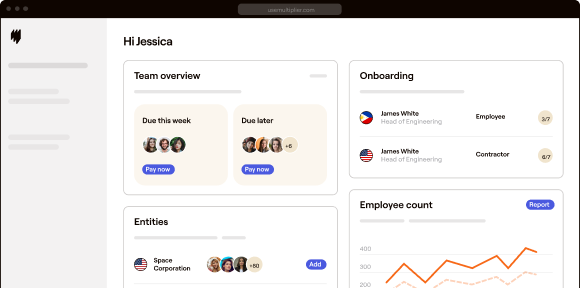Cybercrimes have been on the rise over the last few years, and businesses are the most frequent targets. Around 2,328 cybercrimes take place every day. In 2022, losses due to cybercrimes amounted to over $6 trillion in losses, and this number is expected to reach $10.5 trillion by 2025.
43% of the effort of the trillion-dollar cybercrime industry is directed towards SMBs (small to medium businesses), and almost 80% of all cyber crimes done through phishing occur in the technology sector.
Businesses need a solid Cybersecurity Incident Response Plan to deal with these attacks. A Cybersecurity Incident Response Plan consists of well-defined steps an organization needs to follow to identify, act on, and recover from a cyber attack.
Why Your Business Needs a Cybersecurity Incident Response Plan
On average, it takes around 6.7 hours to recover from a cyber attack, and that is just one attack. Globally, over 2.7 billion hours have been spent just recovering from these attacks.
Imagine the number of hours, resources, and money that can be lost if an organization does not have a robust cybersecurity incident response plan.
Cyberattacks are especially detrimental for small businesses since the financial burden of an attack might have grave effects on the business. A boutique hotel lost over a million dollars to an account in China through a phishing attack. In this case, the CEO received an email that he thought was from the IRS. Upon entering his details, the attackers got access to sensitive information, which was further used to deplete the hotel’s cash reserve. The missing funds were noticed by an accountant two weeks later, and by then, it was too late to recover the funds.
Having a plan does not result in zero cyber attacks, but it definitely helps you with quick identification and prompt response and necessary action. These simple sets of rules can help your business save countless hours and thousands of dollars if followed to the dot.
How to Design a Perfect Cybersecurity Incident Response Plan
The scope of a response plan depends on the size of your organization, the amount of data at risk, and the overall nature of your business. However, mentioned below is a skeleton of a cybersecurity incident response plan that you must keep in mind when designing one for your company.
Build a response team
We all know that a cyber attack on a business can affect every single aspect of the business, from employees to clients. It is imperative that you have a specified cybersecurity response team in place to handle such situations. Starting with the IT security experts who will handle the technicalities of the attack, you must also include HR support to help employees in distress, and even a PR team if necessary.
Jot down a communications strategy
Keeping all employees and clients in the loop is crucial during a cybersecurity crisis, especially the ones affected and the ones who will be integral for recovery. You must be aware of who needs to be notified and when, what channels of communications must be used, what communications must be recorded, and what public/government institutions must be notified (if necessary).
Identify vulnerable assets
Every organization has some loose ends and vulnerabilities that may increase the chances of a cyber attack. As a business owner, you must identify these gaps and increase security efforts in order to filter out a good number of potential attacks. Be sure to educate your employees on how to keep their systems secure, and provide regular training on how to spot a potential cybercrime.
Loop in external experts for additional support
The nature of every cybercrime is different, and there is a good chance that your IT security team is not well-versed in every kind of attack in the world. During a crisis, it is best to get in some additional support from experts to close the attack as soon as possible.
Run regular tests and keep updating your measures
Like everything else in the tech world, cybercrimes also quickly change their ways. It is imperative that your IT security team is constantly updated on new kinds of attacks and keeps running new tests regularly to check for preparedness. Regular tests will help identify the smallest of loopholes and fill them before a cybercrime occurs.
The points mentioned above will make up the core structure of your cybersecurity incident response plan. Depending on the kinds and volumes of data your business handles, you will need to customize it.
The Kep Elements of a Cybersecurity Incident Response Plan
Apart from the points mentioned above, a cybersecurity incident response plan includes a set of very specific elements that must be included in prevention and recovery strategies.
Identify the source
A thorough investigation must be conducted to identify the source of a data breach in case of an attack. This helps in tracking the next steps of the attack, and it also helps strengthen the source for the future.
Ensure proper containment
Once the source is identified, it is a best practice to contain it as much as possible to avoid the virus from spreading further. This can be done by disconnecting the source from the servers/networks, cutting communication with that device, and clearing any critical data on it.
Assess the scope of damage
Once the source is well contained and the breach is under control, the next focus should be on analyzing the scope of damage done and the damage that can be done. This will help your security teams get more clarity on the next steps.
Complete legal obligations
Once the attack is settled down, consult with your legal team on how to report the incident. Understand the laws and get a clear idea of any legal implications that may come from the attack. Make sure you adhere to all security and compliance codes in your country.
Get in touch with your insurance provider
Get in touch with your insurance provider and identify the extent to which the financial repercussions of the attack can be recovered. In case your business is not insured for cyber attacks, getting a comprehensive and third-party policy should be your first priority.
Cleanup all systems
After the cyber attack, a system cleanup is the best way to identify that no trace of the attack is left behind. The best point to start the cleanup would be the source of the attack.
Get the lost data recovered
It is advised that every organization regularly backs up all data. This becomes crucial when you want to recover all the data lost due to a cyber attack. There are multiple data backup services that can help with storing your backups.
Identify the learnings from the attack
The most important after-attack steps are noting down the learnings and strengthening your systems. This will help your IT teams strengthen their cybersecurity incident response plan accordingly. The learnings can also be used to create new training modules for employees.
Acting on these steps and ensuring the elements of a cybersecurity incident response plan are checked is relatively easier in an office. However, it gets difficult for organizations working in a remote setup.
How Can You Ensure Security for Remote Teams?
A cybersecurity incident response plan would be the same for a remote workforce. However, there are some measures you should take to add a layer of security for employees and teams working remotely.
Use Antiviruses, VPN Services, and Internet Security Tools
Remote employees work on multiple internet connections, and not all of them may be secure. The best workaround for this gap is to use firewalls and other security tools that prevent viruses and other malware from creeping into your employees’ work computers.
Ensure work devices are used only for work
More often than not, many employees use their work computer for some personal tasks as well. While this is okay to an extent, it makes their computers very easy targets for downloadable viruses. Therefore, it is advised that work computers should strictly be kept for work use only.
Ensure the security of home networks
Employees must ensure that their home WiFi networks are password protected so that no unwanted devices can connect to the same network. If a hacker gets in the same network, your device becomes a very easy target.
Control access to files and meetings
Employers must ensure that all meetings are password protected and all files stored on the cloud are accessible only to selected people. Zoom attacks became a large threat when remote work took began in 2020, so much so that the FBI issued a set of guidelines we can follow to stay protected.
These are a few measures employers and employees can take to protect their devices from cyber attacks in a remote work setup.
Here’s How Multiplier Ensures Safety
Multiplier is a global EOR service provider that helps you onboard and pay employees in over 150 countries. We take care of everything from employment contracts, onboarding, payroll, benefits, and leave tracking to offboarding.
Our clients trust us with the sensitive data of hundreds of employees across the world. We have a solid understanding of data and take all measures to ensure there is not a single breach for us, or for our clients.
If you are a business owner considering hiring internationally, save yourself from the pain of setting up entities and book a demo now!







